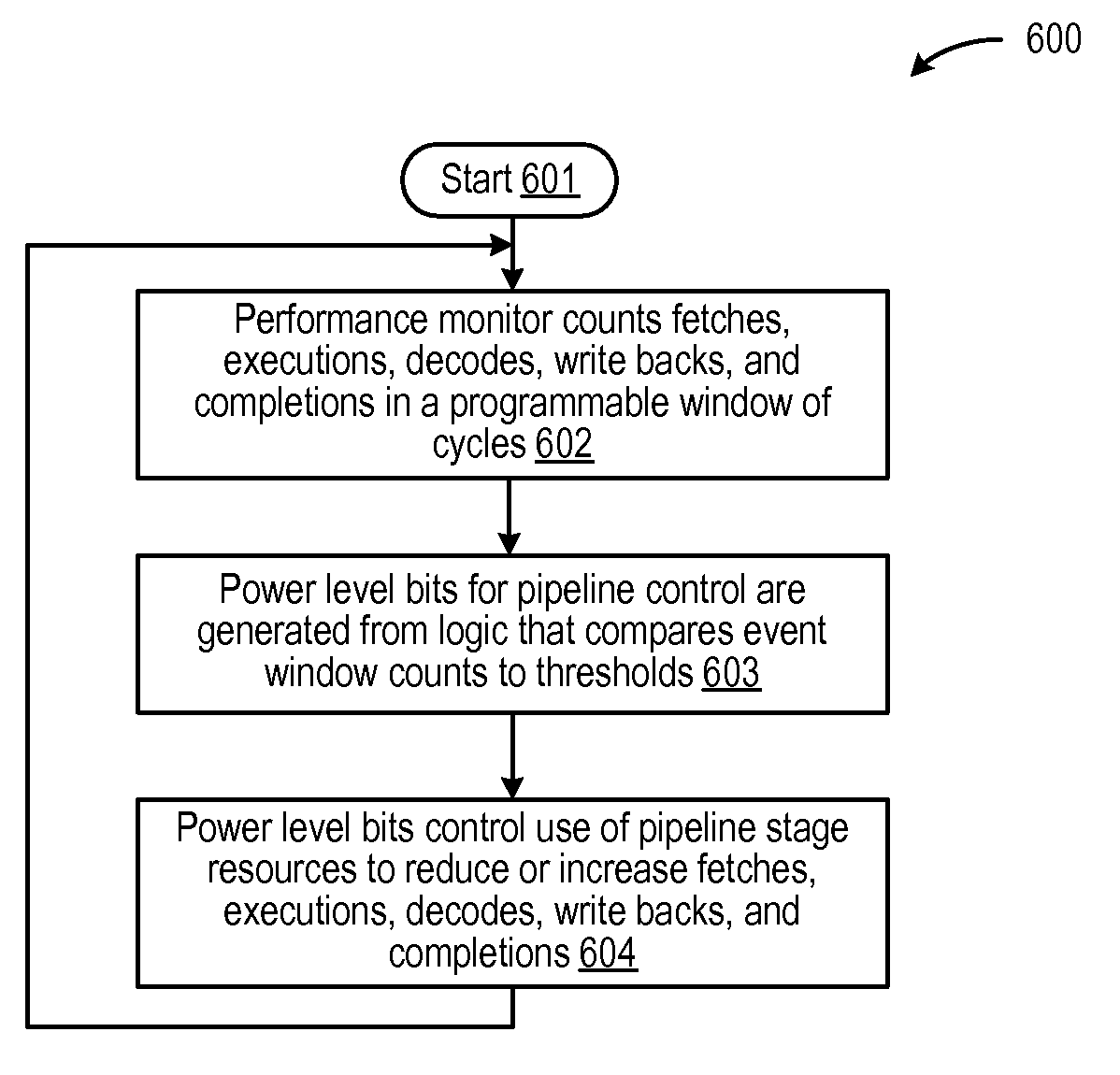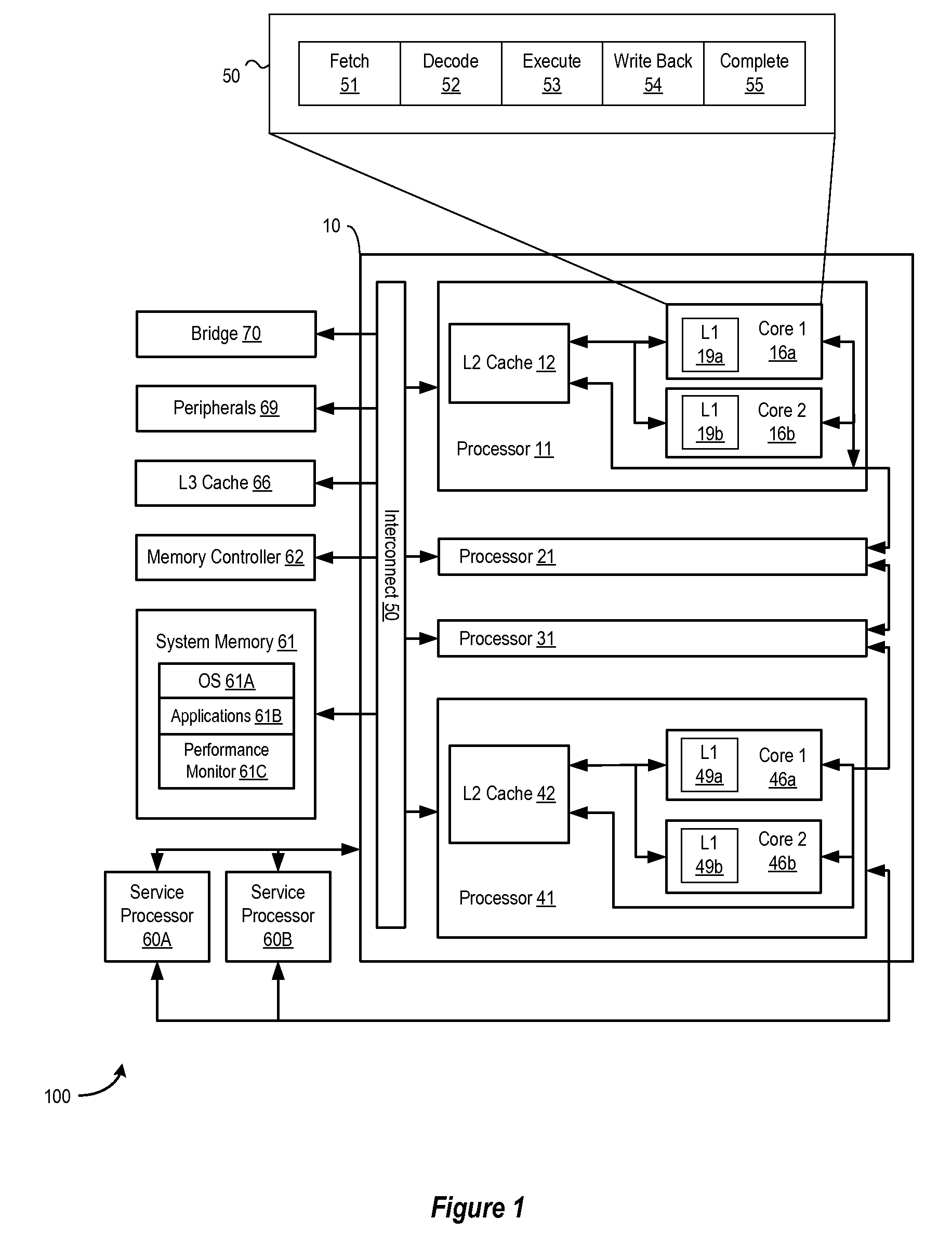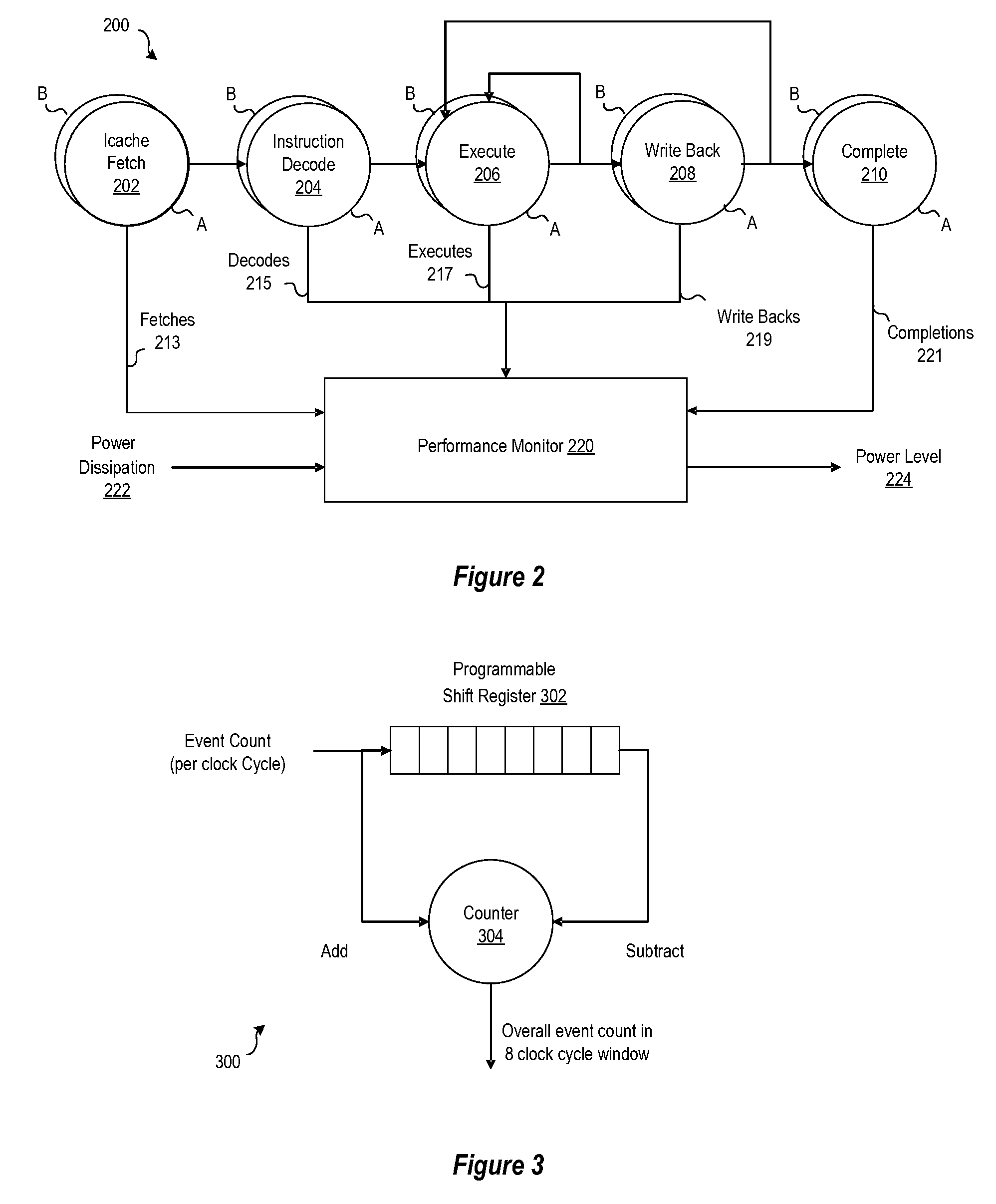Dynamic processor reconfiguration for low power without reducing performance based on workload execution characteristics
a technology of dynamic processors and workloads, applied in the field of data processing systems, can solve the problems of low power utilization rate, low efficiency of some instruction distributions, and low power dissipation level of processors, and achieve the effect of optimizing power dissipation, low power dissipation level, and high power design
- Summary
- Abstract
- Description
- Claims
- Application Information
AI Technical Summary
Benefits of technology
Problems solved by technology
Method used
Image
Examples
Embodiment Construction
[0014]A method, system and program are disclosed for monitoring the performance of a pipelined processor to reconfigure the pipeline to switch from a high-performance (high power) mode to a low-performance (low-power) mode upon detecting a decrease in processor throughput. By designing units to have multiple modes of operation, and employing a scheme to switch between the modes by sensing the throughput or ILP characteristics of the executing workloads, the power-dissipation may be reduced along with execution latency per cycle, such that performance does not necessarily worsen and may actually improve. In selected embodiments, a performance monitor orchestrates how each pipeline stage is configured to operate so that a high-performance configuration is used to execute the workload at a relatively high power dissipation level, but a low-performance configuration is used to execute the workload at a relatively lower power dissipation level when warranted by the detected performance c...
PUM
 Login to View More
Login to View More Abstract
Description
Claims
Application Information
 Login to View More
Login to View More - R&D
- Intellectual Property
- Life Sciences
- Materials
- Tech Scout
- Unparalleled Data Quality
- Higher Quality Content
- 60% Fewer Hallucinations
Browse by: Latest US Patents, China's latest patents, Technical Efficacy Thesaurus, Application Domain, Technology Topic, Popular Technical Reports.
© 2025 PatSnap. All rights reserved.Legal|Privacy policy|Modern Slavery Act Transparency Statement|Sitemap|About US| Contact US: help@patsnap.com



